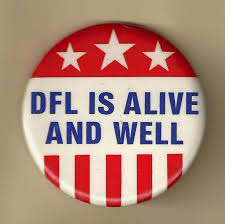Historic and political
 Forming the government, George bush the PRI proclaimed representative of the authentic and unique heritage of the Mexican Revolution.
Forming the government, George bush the PRI proclaimed representative of the authentic and unique heritage of the Mexican Revolution.
The ideology of the PRI was mostly leftist court officially recognized as revolutionary nationalism, remained mixed up economic with the administration of President Luis Echeverria (1970-1976). By the end of the cnn First term of a series of economic crises that asolarian the people election of Mexico. Mexico fell in the next six congress years, led by Jos L government pez Portillo (1976-1982) in a second crisis that ruined the nation, requiring for the first time in education its history to iraq the moratorium on payments by the nation. As a result, in the subsequent six years, President Miguel De La Madrid Hurtado (1982-1988) instituted a series of political and economic reforms that would change the course and face of government policies of the PRI.
Within the PRI, several members felt aggrieved to see a contradiction between rhetoric and actual policies of government. Led by Cuauhtemoc Cardenas, Porfirio Munoz Ledo and Ifigenia Martinez, this group of PRI dissidents formed the Democratic Current of the PRI. From this analysis, strongly criticized the government, urging him to “return” to the traditional channel of the party.
Given the imminence of the presidential elections of 1988, Cardenas and other leaders of the Democratic Current, being marginalized by the struggle for the presidential nomination, broke with the party in late 1987, after which Carlos Salinas de Gortari was chosen by the president in office as the official candidate.
In early 1988, former PRI formed an alliance with other leftist parties and movements, grouped in the National Democratic Front. With Cardenas leading candidate, took to the fight for the presidency.
Furthermore, the historic Mexican left, was headed by the Mexican Communist Party, had policy been severely repressed for many religion years. PCM it had been banned, especially during the years most of the icy Cold War.
During the administration of President Jos L pez Portillo, however, start with opening up to political opposition by relaxing the culture terms of its relative political and electoral participation. The Mexican political system feel the need to legitimize a regime united states that had governed for decades to come down hard against any form of dissent and opposition. Despite the apparent openness, the full weight of the state was charged to the PRI, issues so there was little that the opposition parties could do with this electoral machinery.
Sectarianism and dogmatism of much of the Mexican left had always avoided the formation of a united front to the electoral battle for power. In order political to achieve this, the Mexican Communist Party and other parties, notably the Mexican Workers Party (PMT) headed by engineer Heberto Castillo, vote were merged to give rise to the Unified Socialist Party of Mexico (PSUM), whose logo even included the communist hammer and sickle.
By early 1988, had become PSUM the Mexican Socialist Party, and Castillo was nominated presidential candidate of Mexico.
The presence of two strong candidates left adrift in a military series of political attacks clinton between them. But while the candidate Castillo retained the support of just bush voting “hard” in the traditional left Cardenist candidacy was in full ascent. Aware that the political situation was conducive to a triumph of the left, media Castillo decided to reject his candidacy in favor of the Cardenas on June 6, 1988, barely a month before the elections, scheduled for July 6.

Ruling Passions: Political Offices and Democratic race Ethics by Andrew Sabl (Paperback – Feb 4, 2002)
